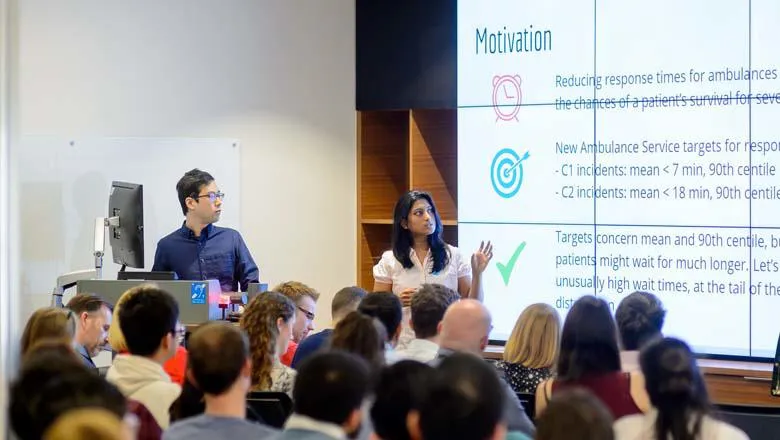09 May 2019
CUSP London students and partners examine London ambulance statistics at Data Dive 2019
Students, industry partners and local authorities explored data relating to the London Ambulance Service NHS Trust (LAS) at CUSP London’s Data Dive 2019 earlier this year.

CUSP London brings together researchers, businesses, local authorities and government agencies to apply urban science to improving public health and wellbeing. LAS is the busiest UK ambulance service, receiving 1.8 million calls per year, and responding to over 1.2 million incidents annually. These incidents range from immediately life-threatening emergencies, where patients need advanced clinical support, to less life-threatening but still urgent care needs.
The challenge for the LAS is to deliver the best possible emergency and urgent care to all Londoners in the most efficient way whilst also supporting staff wellbeing, operating in a congested environment, and avoiding adding pressure to other parts of the NHS system.
The LAS is already a data-driven organisation, making decisions based on quantifiable evidence wherever possible, but there is much still left to discover in the data and many new relationships to determine. The LAS wants to be able to fully understand the factors impacting on demand, workforce and patients, in order to build a better urgent and emergency healthcare service for the future.

Students took part in the CUSP London Data Dive from King’s, University of Warwick, New York University and University College London, alongside CUSP London partners Westminster City Council, MOPAC (Mayor’s Office Policing and Crime), Bosch and the Greater London Authority.
The participants used data relating to LAS calls, incidents and responses, which together make up the full patient journey whilst in the care of the LAS, from the connection of the call made by the patient, relative or bystander until the handover of patient care. Additionally the LAS shared information on frontline staff capacity, workforce status (including staff joining, in post and leaving) and staff commute details.
The questions considered by the attendees included:
- How to respond most appropriately to the needs of different demographics across London
- Whether we can use transport data to predict LAS demand
- How to discern common characteristics of calls made at different times of the day, week or year
- Whether there is an identifiable pattern to LAS ‘leavers’
- Whether incidents of knife crime, in particular, correlate with ambulance call-outs
The participants presented their findings at the end of the four-day event to an expert panel. This Data Dive event followed on from 2018’s Data Dive, which took as its subject road safety in London.
